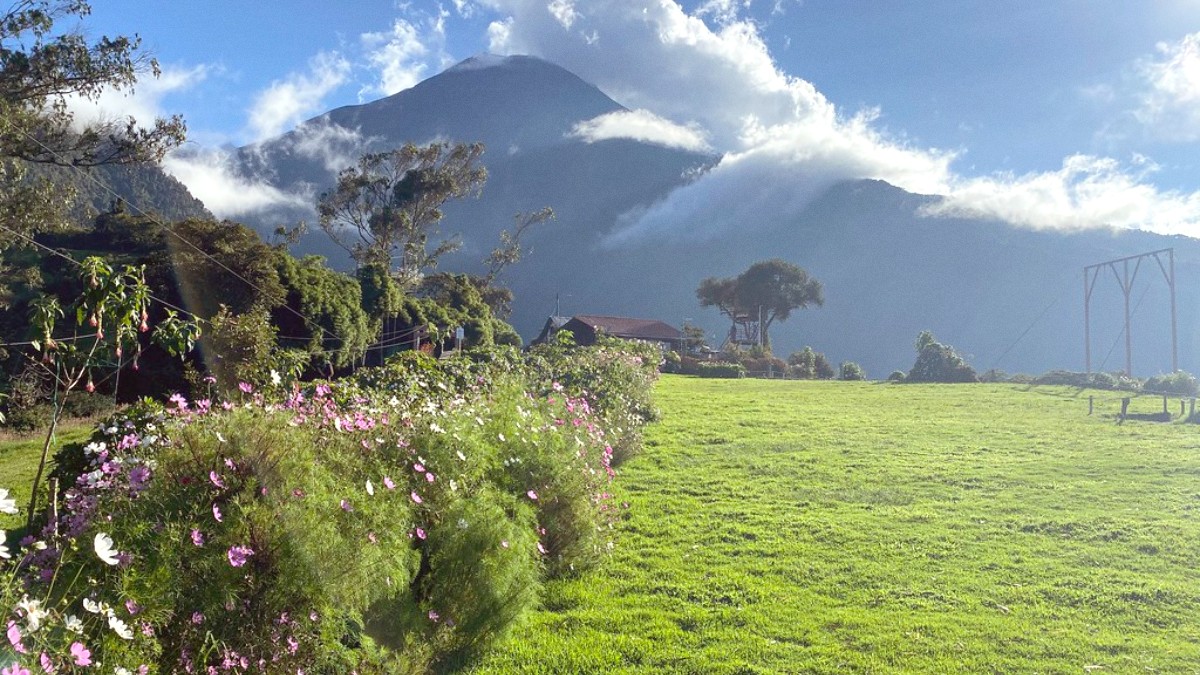
Central Highlands, Ecuador
Dry Season (June to September): This period is often the most popular. Rainfall decreases significantly, leading to clearer skies and more sunshine. Mornings can be slightly cooler, making outdoor activities comfortable. Trails are less muddy, and views of the Tungurahua volcano are more common. Occasional showers can still occur, especially in the afternoons. The region remains humid.
Wet Season (October to May): This season brings more frequent and heavier rainfall. Showers often occur in the afternoons, but mornings can still be sunny and warm. Temperatures are slightly warmer during this period. The rain can make some hiking trails muddy and increase river levels, a consideration for water sports.
Baños does not experience hurricanes. The wet season brings substantial rainfall. Intense downpours, specifically during the wet season, increase the risk of localized flooding or landslides on roads.
Always check local road conditions if traveling by bus or private vehicle during periods of heavy rain. Extreme temperatures are not a concern; the climate stays consistently mild to warm year-round.
June - September, Dec - Jan, Easter Week
Optimal weather for outdoor pursuits. Lively town atmosphere. All tour operators fully operational. Festive environment during holidays.
Higher prices for accommodation and tours. Crowded attractions, longer wait times. Advance booking for hotels and tours advised.
October - November, February - March
Fewer crowds, potentially lower prices. Pleasant weather with sun and rain. Lush, green landscapes. Access to most activities.
Increased chance of rain, may impact outdoor plans or volcano views. Some tours might have reduced frequency.
May (heaviest rainfall)
Lowest prices for hotels and tours. Minimal tourist crowds, a more authentic and quiet local interaction.
Frequent and heavy rainfall. Trails may become muddy or impassable. Some outdoor activities less appealing. High river levels for water sports.
The region's weather can shift quickly from sunny mornings to misty afternoons. Layered clothing makes adapting to these changes simpler.
Rainfall, while frequent in the wet season, enhances the waterfalls' power and keeps the landscapes vividly green. Embrace it as part of the Baños experience.
Visit June to September for the best volcano views and dry trails.
Water sports are good year-round, with high river levels in the wet season.
May offers minimal crowds and lower prices on accommodation and tours.
Consider December, January, or Easter Week for a lively atmosphere.
A Lightweight waterproof rain jacket or poncho is a must, even in the dry season.
Requirements vary with your nationality and planned stay.
Many nationalities, including citizens from the US, Canada, EU, Australia, and New Zealand, do not need a visa for tourist stays up to 90 days within a 12-month period.
Have these documents ready for immigration upon arrival.
Your daily expenses in Baños will vary significantly based on your travel style.
An overview of typical expenses.
| Category | Price Range (USD) | Notes |
|---|---|---|
| Hostel Dorm Bed | 8-15 | Per night |
| Mid-range Hotel Room | 30-70 | Per night, private bath |
| Almuerzo (set lunch) | 3-5 | Soup, main dish, drink |
| Bus from Quito | 4-6 | Approx. 3.5-4 hours |
| Canyoning/Rafting Tour | 25-60 | Half-day tour |
Prioritize your well-being and security during your Baños adventure.
Recommended for specific jungle areas below 2,300m, accessible from Baños. Consult a travel health clinic.
Ensure MMR, DTaP, Polio are current. Typhoid, Hepatitis A & B are often recommended.
Traveler's diarrhea is common. Altitude sickness is rare in town but possible at higher elevations. Mosquito-borne illnesses in lower areas.
Drink only bottled or reliably filtered water. Avoid tap water.
Eat hot, cooked food. Peel fruits and vegetables. Choose clean, busy street food stalls with fresh, hot food. Avoid raw salads if hygiene is uncertain.
A LifeStraw or other Water filter Bottle reduces plastic waste.
Many hotels offer purified water refills.
Local Hospital Básico Baños for routine issues. Private clinics and pharmacies available. Serious cases may need transfer to Ambato or Quito.
Numerous pharmacies (Farmacias) marked with a green cross. Many common medications available without prescription.
General Emergency (Police, Ambulance, Fire): 911. Police (Direct Line): 101. Fire Department (Direct Line): 102.
Baños is generally safe, but petty crime can occur. Natural disaster risks relate to volcanic activity and landslides.
Comprehensive travel insurance is strongly recommended.
Emergency medical treatment, evacuation, trip cancellation, lost luggage, and adventure activities (check policy). Consider World Nomads or SafetyWing.
Have a readily accessible list: 911 (local emergency), your embassy/consulate in Quito, travel insurance hotline. Use AirHelp for flight issues.
A basic First aid kit with wound care, pain relievers, and anti-diarrhea medication is useful. Don't forget Insect repellent and High-SPF sunscreen.